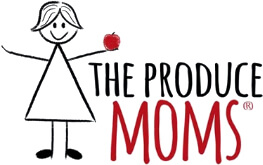Shriveled root veggies, sprouted onions, and moldy berries—sadly these are common finds in a kitchen. Have you forgotten what you’ve purchased, or stored produce improperly only to find it with your sniffer rotting away in a dark corner. You are not alone! The National Resource Defense Council estimates that up to 40% of harvested food in the United States goes uneaten and ultimately to waste.
Being smart about the storage of fruits and veggies is a wise way to fight food waste and save some money too. By storing fresh produce in the right environment you can give it the right life, maximizing both its freshness and longevity.
On the Counter:
Banana and tomato are heat-loving crops so it makes sense that they do not like the cold even after harvest. Display these fresh picks in a fruit bowl or on the counter at room temperature for up to 1 week. Cold refrigeration can lead to soft brown bananas and mushy maters.
Fridge First, Then Counter:
Watermelon, peach, pear, apricot, plum, and persimmon live their longest life when stored in the refrigerator post-harvest. These fruits can be stored cold for 1-2 weeks, but for optimal taste remove them from the fridge 1-2 days prior to eating. Room temperature really brings out their sweetness.
It is also important to remember that pears need to ripen at room temperature, so don’t refrigerate an unripe pear! Place under ripe pears in a fruit bowl at room temperature near other ripening fruit like bananas, which naturally give off ethylene and will help speed up the ripening process.
Citrus should live in a clean, crisper drawer to keep it fresh and isolated from potential cross-contamination. However, in many homes, people prefer citrus to be room temp before eating. So if you like citrus room temperature, a bowl on the counter is a great black for shelf-serving and keeping a nutritious snacking option at hand.
Counter, Then Fridge:
Avocados, mangos, melons, nectarines, peaches, pineapples and plums sometimes are still a little hard when you get them home. You can set them on the counter or in a bowl to ripen before you put them in the refrigerator.
In a Dark Pantry:
Potatoes,sweet potatoes, dry beans, onions, shallot, garlic, and winter squash like it cool, dark, and dry. Store these vegetables separate from each other in a location away from direct sunlight. A pantry or a produce box with holes to allow ample air-flow are both suitable. You can expect 4 or more weeks of freshness from these veggies if stored correctly.
Best in the Fridge:
Apple, grape, strawberry, cherry, and corn offer their longest shelf-life when stored in the fridge. Apples stay fresh 4 or more weeks when refrigerated. Grapes, strawberry, cherry, and corn stay fresh 1-2 weeks when stored in the fridge. Don’t worry about freeing up drawer space for this produce, an open shelf will do.
In Fridge Drawers:
Asparagus, beets, broccoli, Brussels sprouts, cabbage, cauliflower, celery, celery root, citrus, cucumber, eggplant, fennel, green beans, herbs, leafy greens, mushrooms, peas, peppers, and scallions are on the long list of fruits and veggies that prefer to be kept in refrigerated crisper drawers. Refrigerator temps should be kept at 40 degrees Fahrenheit to keep fridge drawers from freezing fresh produce.
If your fridge has more than one crisper drawer, it is a good idea to use the low-humidity setting on one drawer and the high-humidity setting on the other drawer. Thin-skinned produce like leafy greens and herbs wilt easy and fare better in high-humidity storage. You can also store humidity loving produce in a plastic bag if that is easier. Produce that rots when wet like cucumber and cabbage should be stored in the low-humidity drawer.
Plan Meals Around Perishability
Scan your counter, fridge and pantry at least once a week to take count of available produce before purchasing more. Plan and prioritize meals around the perishability of fresh fruits and veggies. You can also process produce by freezing, dehydrating, or canning before rot occurs to extend its shelf-life.
Proper produce storage helps you to eat good and graciously.
Remember, it’s always a good idea to #SavetheProduce and #HaveAPlant!
Have excess produce you just can’t eat right now? Freeze it for later!
Read the article here: Where to Store Your Fruits and Vegetables

